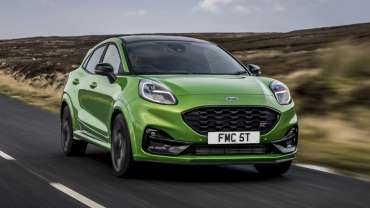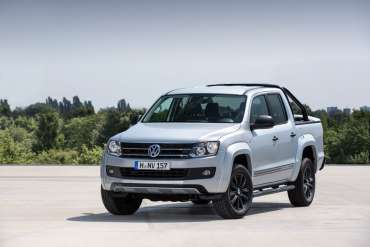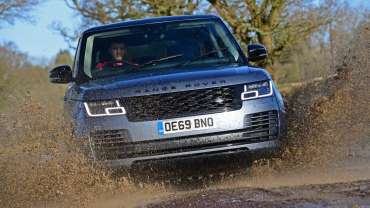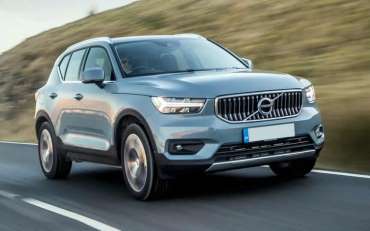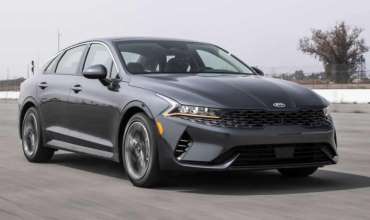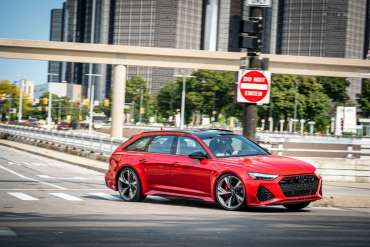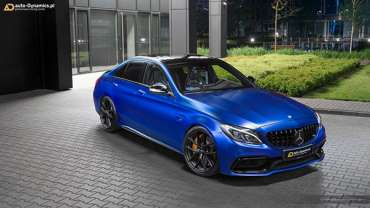
Worldcarblog.com
Ford Puma ST SUV review
"The Ford Puma ST is great to drive, has a brilliant engine and offers all the practicality of an SUV with hot hatch thrills"
We already liked the new Ford Puma because it’s a practical SUV that’s also good to drive, and now there’s an even sportier version, called the Puma ST, which has a more powerful engine and changes to make it sharper to drive.
Alternatives to the Puma ST include the Volkswagen T-Roc R and the Audi SQ2, although both are both much more expensive and more powerful than the Ford. Don’t assume that it makes them more fun though.
The Puma uses parts from the fantastic Fiesta ST hot hatchback, in particular the 1.5-litre EcoBoost three-cylinder turbocharged petrol engine. It produces 197bhp and 320Nm of torque, the same as in the Fiesta ST supermini, and there’s a six-speed manual gearbox, improved brakes plus suspension changes.
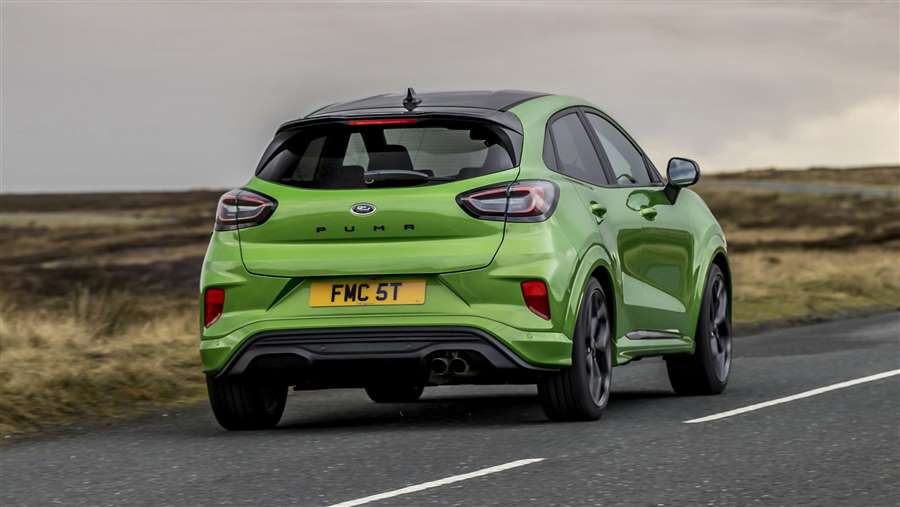
The Puma does drive differently to the Fiesta as it’s a larger car but this is also because Ford has designed it to be better at everyday tasks. It’s more practical than the Fiesta as a result, though not quite as fun to drive.
The Puma is still the best-handling small SUV you can buy and if you need an SUV but want the thrills of a hot hatch, then the Ford Puma ST could be a brilliant buy. Read on to find out more in our full review.
MPG, running costs & CO2
Since the Puma ST uses a three-cylinder 1.5-litre petrol engine, it’s actually fairly economical for a performance car. Don’t set your expectations too high, though, as the ST isn’t as frugal as the standard versions of the Puma.
Official figures suggest that the Puma will return 40.9mpg and emit 155g/km of CO2, which is better than the Audi SQ2’s 33mpg and the VW T-Roc R’s 32mpg. While those are all figures from official tests rather than real-world driving, we still expect the Puma to be more economical.
The Puma makes more sense than either of those models to buy; it’s around £10,000 cheaper than the Audi or Volkswagen, depending on specification, yet is more fun to drive than either of them.
Engines, drive & performance
One of the best-handling SUVs you can buy
Fast Fords are consistently excellent to drive and the Puma ST is no exception - in fact, we’d argue that it’s the most fun you can currently have in any small SUV.
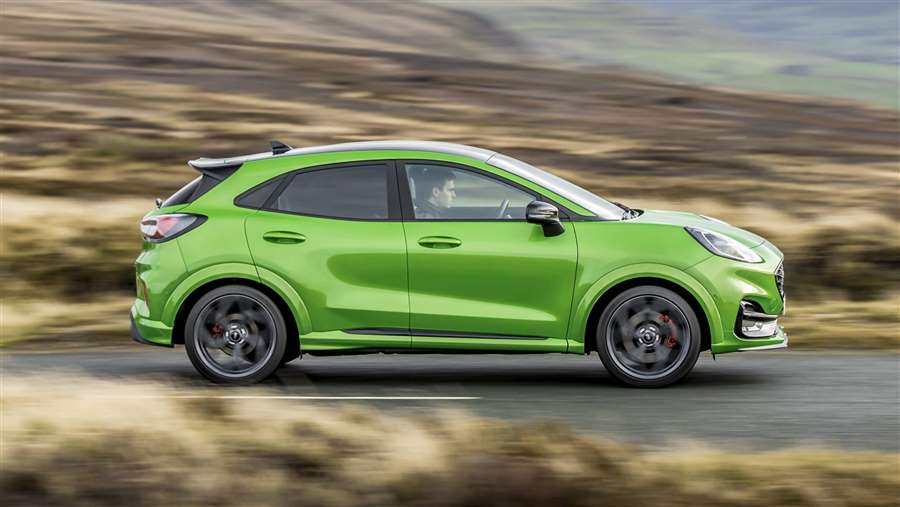
The ride can be a little bumpy at low speeds but once you’re going more quickly, the Puma ST is relatively smooth and feels at home on country roads. It’s great fun to steer through a series of bends on a twisty road.
The steering is very sharp, which can feel a little disconcerting because you can often turn it too much without meaning to. Once you get used to it, this is less of a problem, but it does feel slightly oversensitive.
Performance is very good: the Puma ST goes from 0-62mph in 6.7 seconds, which seems well-judged for UK roads because you can have plenty of fun within the speed limit. It’s not quite as quick as the smaller Ford Fiesta ST but outright straight-line speed is not what this car is about.
The rest of the driving experience is great too; the manual gear shift is fun to use, the pedals are nicely placed and the brakes feel strong and reliable.
Interior & comfort
Not the most comfortable Puma but comfortable seats make a difference
In the Puma ST you get some really supportive and comfortable Recaro sports seats as standard, which help to keep you in place when cornering. Larger drivers might find they’re a bit tight.
The ST also comes with a flat-bottomed steering wheel with ST badging, some new pedals and a different gearknob. You also get wireless charging for your smartphone, parking sensors, a 12.3-inch digital driver’s display and an eight-inch infotainment touchscreen with Ford's SYNC 3 software, sat nav, Apple CarPlay and Android Auto.
This makes the Puma ST one of the best-equipped models in the Puma range and while the interior does have some cheaper-looking plastics, the level of technology means it feels modern and pleasant inside.
Practicality & boot space
The Puma ST is just as practical as the standard version
All of the regular Puma’s neat practical touches are still present in the ST model, which is great to see. The fantastic ‘Mega Box’ is present in the boot - this is a huge storage compartment under the floor that’s big enough for a whole family shop.
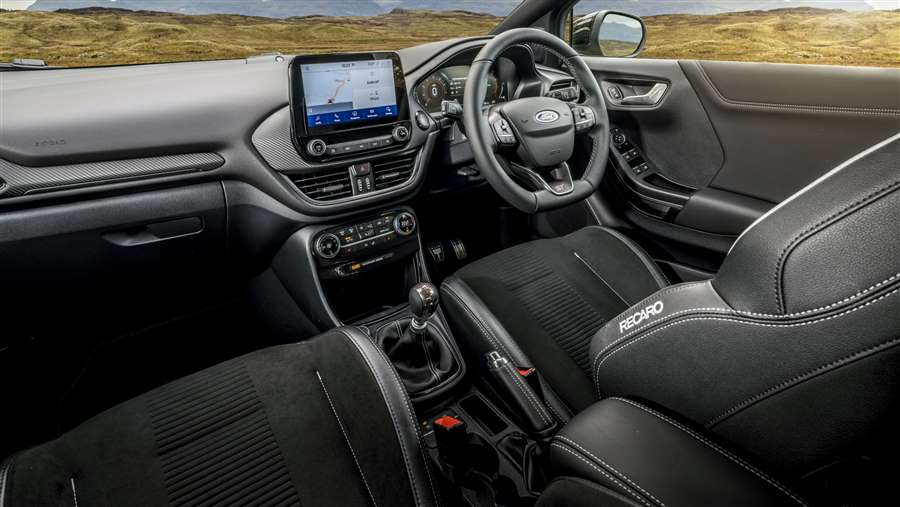
The boot itself is excellent at 456 litres, and the plastic floor means you can even hose it out - there’s a plug at the bottom of the Mega Box that lets water drain away.
Inside the Puma you’ll find a good amount of passenger space, though adults in the back might start to feel cramped on a longer trip.
Reliability & safety
High-performance Puma will match normal version for safety
The Puma ST takes the same Euro NCAP safety rating as the normal car - that being a five-star score with an excellent rating for adult protection. Thanks to autonomous emergency braking (AEB), lane keep assist and adaptive cruise control, it’s packed with safety kit.
Ford came in 24th place in this year’s Driver Power survey, which was disappointing as it’s near the bottom of the list. It indicates that, on average, the ownership experience isn’t as good as it is for many other brands.
Source: carbayer.co.uk
Volkswagen Amarok Still Impresses from Afar
While VW's next Amarok pickup will be based on the Ford Ranger and may possibly come to the United States, it's a shame the current truck never made the trip.
A few years ago, we asked a Volkswagen executive why the Amarok pickup truck wasn't offered in the United States, where pickups are a default mode of personal transportation. His answer: It's too good and, therefore, too expensive. He added that if VW had partnered with one of the established truck manufacturers, it could be a different story.
In the United Kingdom, the Amarok's base price was about $35,000 before taxes and destination charges, stretching to around $52,500 for a top-of-the-line Aventura model with the most powerful engine. You can see how that would be a tough ask in the U.S., where a Chevrolet Colorado ZR2 costs less than $45,000.
The Amarok's premium price reflects the ambitions of former CEO Ferdinand Piëch, who commissioned the project to get VW into the mid-size pickup market. Typical of mid-2000s Volkswagen, the company chose the most difficult path, designing the Amarok from scratch. Now, a decade after its introduction, the Amarok has reached the end of its life cycle as the remaining stock in the European market dwindles. The factory where it's built, in Hanover, is switching over to produce the new Multivan and electric ID. Buzz, and import tariffs make it prohibitively expensive to import the Amarok from VW's plant in Argentina. The Amarok will continue to be built and sold in South America, though, for a few more years.
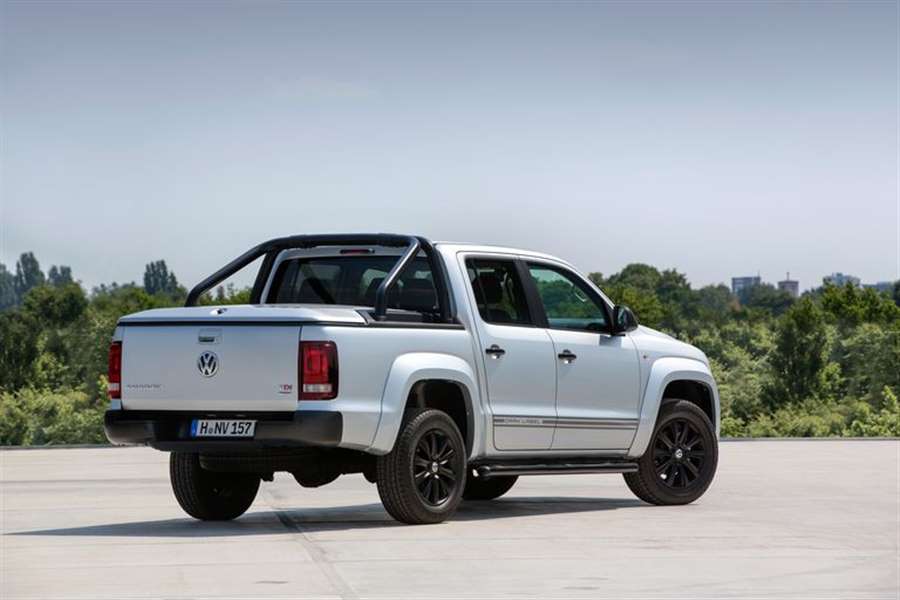
Depending on the market, the Amarok is powered by four-cylinder gasoline and diesel engines or by an Audi-designed turbocharged diesel V-6. It's available in rear- or all-wheel drive and as a single cab or a four-door crew cab. We drove a top-level version, an Amarok Dark Label special-edition crew cab, with all-wheel drive and a 201-hp 3.0-liter diesel V-6 mated to an eight-speed automatic transmission.
Ten years after its debut, the Amarok is still well-proportioned and pleasantly subdued in appearance—unless it's specified with Dark Label trim. Riding higher than a regular Amarok, the Dark Label is fitted with a roof-mounted LED light bar and a snorkel, standing tall above European traffic.
Once you've climbed up into the cabin, the Amarok feels familiar. Straight, clean lines reflect the design language that was en vogue in Wolfsburg circa 2010. The buttons and switches feel thick and provide satisfying feedback. And the materials, while not quite Audi grade, are better than you'd expect in a mid-size truck. The touch-sensitive navigation screen is a bit small by today's standards, but it includes seamless connectivity.
The turbo diesel that made its debut in the 2014 Audi A6 and A7 assumes its duty with a quiet, reassuring purr. The torque-rich 3.0-liter is familiar from other Volkswagen Automotive Group vehicles, including performance and luxury cars. And while this one is in a mild state of tune, a diesel V-6 is unusual in this segment, where most competitors deem a gasoline-fed turbo-four or large-displacement V-6 to be entirely sufficient. This engine's potential was demonstrated by the 2019 Amarok Red Rock concept, which cranked out 350 horsepower but never made it to production.
The Dark Label's 201-hp rating translates into a claimed zero-to-60-mph time in the 9.0-second range and a terminal velocity approaching 120 mph. The most powerful Amaroks offer 255 horsepower and top out at a claimed 129 mph, which would make them the fastest pickups in the U.S. The version we drove serves up maximum torque of 369 pound-feet from 1250 to 2750 rpm. While the engine's growl remains subdued even under high loads, the snorkel system emits a delicious hiss that can be modulated with the throttle and reliably manages to turn heads while prowling the city.
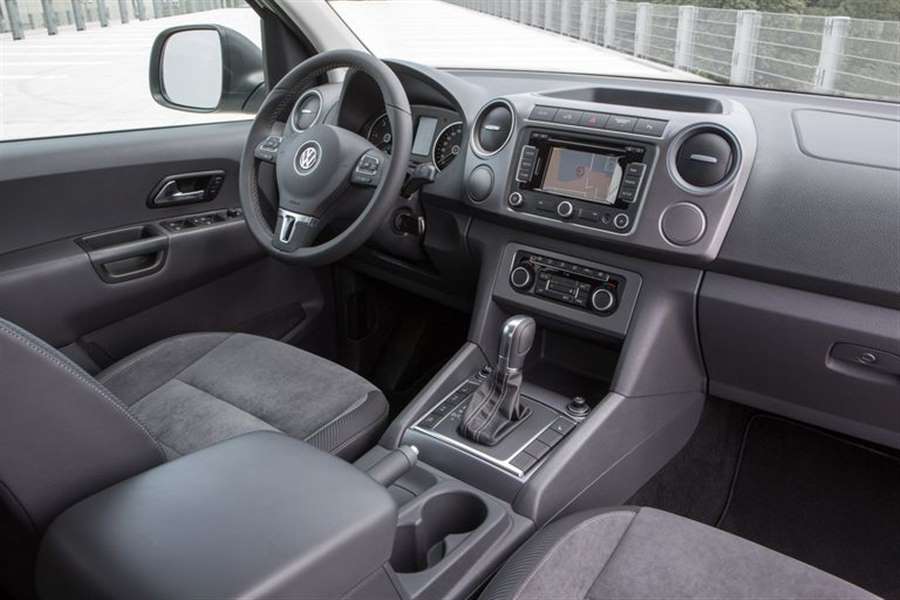
The single-turbo V-6 operates with surprisingly little turbo lag, and the bountiful torque means that the Amarok feels quicker than its leisurely shove to 60 mph would suggest. On an empty autobahn, 110 mph is a comfortable cruising speed. We observed fuel economy in the 23-mpg range, although aggressive driving will drop that to around 17 mpg.
Piloting the Amarok at triple-digit velocities feels remarkably safe. It tracks steadily, and the low-effort steering offers ample feedback. The suspension is designed for truck stuff—hauling and towing—yet even an empty Amarok feels comfortable enough for long trips. It might not challenge the Honda Ridgeline's on-road manners, but the Amarok manages to deliver plenty of off-road capability and utility while doing a credible impression of a Piëch-era VW sedan on the highway.
In fact, with the optional aluminum tonneau cover, you can use the Amarok as a sedan that happens to have an exceptionally large trunk. That cover kept the luggage—in my case, a boxed collection of rare books—totally dry during an unexpected downpour.
Despite its refinement and capability, however, the Amarok's run is over. At least VW has promised a successor. Slated for a launch in late 2022, the next-gen Amarok will be co-developed with the Ford Ranger. It will still be called Amarok, and a diesel engine will continue to be offered. But this time around, the price should follow the trajectory of other post-Piëch projects and take a healthy drop. And this might finally make the Amarok a feasible product for the country that can't get enough pickup trucks.
Source: caranddriver.com
Range Rover SUV review
"The Range Rover is an SUV icon, built to be one of the most upmarket and comfortable ways to travel, whatever terrain you need to cross"
The latest evolution of the legendary Range Rover SUV would be almost unrecognisable to owners of the simple original model, which was designed to offer more comfort than the Land Rover on which it was based, but was still rather workmanlike.
Before long, the Range Rover was adopted by wealthy owners with sprawling estates, making it the 4x4 to be seen in – a fact cemented by the Royal Family being photographed driving them – and its utilitarian plastic interior trim was gradually made more luxurious, with wood veneer and swathes of leather.
Over the years, it’s been kept bang up-to-date, but one thing that has never changed is Land Rover’s commitment to the Range Rover being the most capable off-roader you can buy. To this end, even a top-spec Range Rover – with an interior as luxurious as a premium saloon car and destined to spend its life in Kensington – still has the technology to scale almost any mountain or ford any river.
The Range Rover has taken this concept to the next level, with a greater emphasis on exterior and interior design than before. Inside, the dashboard is uncluttered and simple, with attractive materials and a pleasant design. A 2017 update modernised the infotainment system, ushering in two screens on the central console but this now feels dated compared with JLR's latest infotainment in newer models like the Land Rover Defender. There's gesture control for the sunblind, LED headlights and an Activity Key that allows owners to leave the normal key in their Range Rover while wearing a rugged, waterproof bracelet version. Meanwhile, comfort for rear-seat passengers is better than ever – especially if you go for the long-wheelbase model.
Impressively, despite all these technological additions, the latest Range Rover is 420kg lighter than its predecessor, which improves performance and running costs. The P400e petrol hybrid is the cheapest to run, despite its impressive pulling power. For those that want a mild-hybrid, the P400 MHEV uses a 3.0-litre straight-six engine producing 395bhp. For higher mileage drivers who want a diesel engine, there’s the 3.0-litre D300 and D350, a pair of 'Ingenium' straight-six diesel mild hybrids introduced in 2020, with 296bhp and 345bhp respectively.
The other extreme is the 5.0-litre supercharged V8 engine with 518bhp or 557bhp, which you can also find in sports cars like the Jaguar F-Type. The most powerful version is exclusive to the SVAutobiography Dynamic, which is as menacingly raucous as you’d want. This model comes with a tuned chassis and has responses honed to be as close as possible to a Range Rover sports car. It manages 0-62mph in just 5.4 seconds, while passengers travel in unabashed luxury.
Managing the same 5.4-second 0-62mph time, the ‘normal’ 518bhp version of that engine is available on Autobiography models. That name signifies the top of the Range Rover tree, but you can still spend many hours poring over the options, colour combinations and accessories in the brochure – it’s easy to send the cost of this SUV deep into three figures. However, even the entry-level Vogue and Vogue SE models are well equipped, the opulent Autobiography versions compete with the Bentley Bentayga – the world’s most expensive SUV – for luxury and comfort.
While the off-road prowess and craftsmanship of the Range Rover aren’t in doubt, the marque has struggled for reliability in the past. Not enough owners provided details for the latest version to appear in our 2020 Driver Power customer satisfaction survey, but the Land Rover brand came a disappointing 25th out of 30 manufacturers overall, hampered by poor reliability and steep running costs. But we’d imagine few people buy a Range Rover expecting it to save them pennies and there’s nothing else on the road quite like it, with a stunning design and unique ability to sooth long journeys one minute and then canter up grass banks too steep for most horses the next.
Range Rover SUV - MPG, running costs & CO2
If you’re worried about fuel economy, chances are you’re probably not after a big luxury 4x4. The Range Rover is expensive to buy and run.
Despite Land Rover's best efforts to lighten the Range Rover, it's still an absolutely huge car and as a result, it's still heavy. Factor in the poor aerodynamics of its tall, boxy shape, and it's clear the Range Rover will struggle to deliver impressive economy and emissions.
While the latest Range Rover is the most fuel-efficient yet, we’re still talking about a car with a fair appetite for fuel. Even with a new design and mild-hybrid technology, the latest 3.0-litre D300 diesel claims an official fuel economy of 32.5mpg (WLTP) and CO2 emissions of 228g/km.
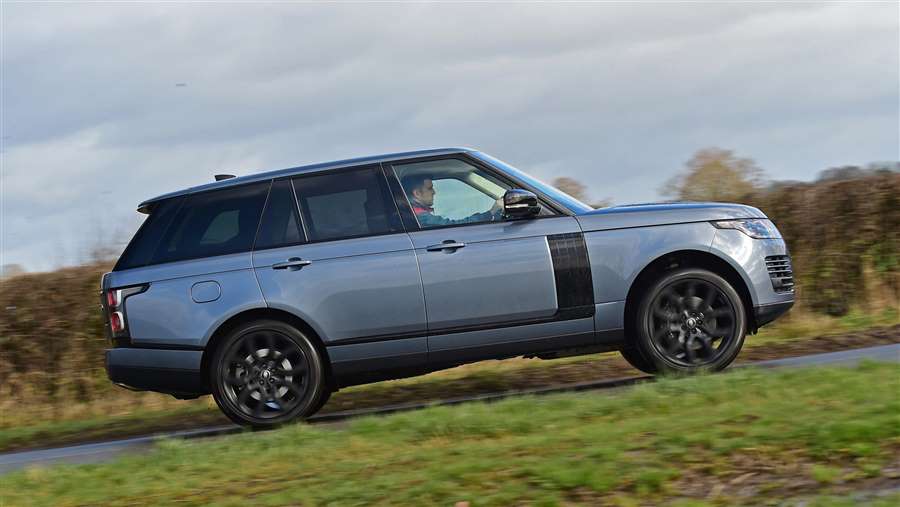
The more powerful D350 Range Rover, is even thirstier, managing 30.6mpg and 242g/km of CO2 - although this is an improvement on the SDV8 it replaces. If you want the ultimate in SUV performance, Land Rover says the 5.0-litre V8 petrol will do around 19mpg, but in everyday use, it's likely to be closer to 15mpg. However, you’re unlikely to find the economy much better in other high-performance SUVs like the Mercedes GLS 63 AMG, BMW X5 M or BMW X6 M.
The Range Rover P400e plug-in hybrid – which we've reviewed separately – combines a turbocharged 2.0-litre petrol engine and electric motor, providing an all-electric driving range of 25 miles on a full charge. Land Rover claims CO2 emissions of 77g/km and an average fuel consumption figure of up to 82.3mpg. The P400e brings significant Benefit-in-Kind (BiK) reductions for business users, being the only Range Rover not in the highest band. Unfortunately, though, its emissions mean it just misses the 75g/km cut-off for free travel into the London Congestion Charge zone.
A mild hybrid was introduced in 2019, the P400 MHEV is fitted with a turbocharged 3.0-litre straight-six petrol engine and a mild-hybrid system consisting of an electric supercharger and battery pack. It stores the energy normally lost under braking into the 48-volt battery. This power is used to improve the engine’s efficiency under load, assisting acceleration when starting off as well as improving the effectiveness of the stop start system. Land Rover claims this setup can achieve fuel economy of up to 26.4mpg and CO2 emissions of 243g/km - which isn't far off the efficiency of the D350 diesel engine.
With the exception of the plug-in hybrid version, every Range Rover is liable for £150 annual road tax from the second year. The P400e attracts a slightly reduced rate of £140. Again from the second year, all versions are liable for an additional surcharge of £325 for five years because they cost more than £40,000.
In terms of residual values, a rule of thumb is that the more expensive the model of Range Rover, the worse the depreciation will be.
Insurance group
Even Range Rovers fitted with sensible engines attract hefty insurance premiums. The cheapest model in the range – the SDV6 Vogue – is in insurance group 45 out of 50. As models get more expensive, they begin to move up the group rating system, with the V8 Autobiography and SVAutobiography models sitting in group 50, the most expensive insurance bracket. As ever, make sure to contact your insurer before making a buying decision.
Servicing
Land Rover says you should have your Range Rover serviced every 15,000 miles. Big engines have lots of spark plugs and other things that will need to be replaced, so it'll be a lot pricier to service than your average family car.
Warranty
There's a fairly generous three-year/unlimited-mileage warranty offered on the Range Rover. That’s pretty much average for this type of car, but the Toyota Land Cruiser comes out top here, with a five-year/100,000-mile warranty.
Range Rover SUV - Engines, drive & performance
Incredible off-road performance and towing ability when you need it, plus a comfortable limousine-like ride when you don’t
The latest Range Rover weighs 420kg less than its predecessor, which has a positive effect on handling and performance and for such a big, bulky car, it certainly doesn’t disgrace itself on a twisty road.
While all models handle surprisingly neatly, the SVAutobiography Dynamic shows exactly what the Range Rover can do. Sure, it won’t shrink around you and you’re always aware of the weight and bulk of what you’re driving, but with lowered ride height and modifications to the suspension and steering, fast corners can be taken with confidence.
Step into one of the SVAutobiography’s less muscular sisters and there’s a profound difference – they feel looser, less responsive and more prone to leaning in corners. However, the high view out inspires confidence: the car is easy to place and swift cross-country progress is a relaxing experience. Occupants are well insulated from the outside world and the suspension is comfortable so you’re likely to adopt a more sedate driving technique.
With all its comfort and ability to take corners without tripping up, it’s all the more impressive that the Range Rover is still one of the most capable off-roaders you can buy. Its Terrain Response technology adjusts the suspension and traction-control systems to suit the kind of surface you're driving on. The car is capable of wading through water, crossing mud and ruts and ascending and descending steep slopes with ease.
All engines send their power through an eight-speed automatic gearbox, which works smoothly around town, yet can also provide quick, sudden shifts when accelerating quickly.
Range Rover diesel engines
If you’re buying your Range Rover as a sensible, mile-munching workhorse, all you really need is the entry-level 3.0-litre D300 engine. New for 2020, this straight-six with mild-hybrid tech will launch the car from 0-62mph in 7.4 seconds, which is about what you'd expect from a sporty hatchback. This engine is also incredibly quiet and smooth, to the extent that you'll only ever really hear it if you accelerate as hard as you can, and even then it doesn't sound bad.
The D350 is a more potent version of the same engine with 345bhp, which makes motorway cruising terrifically relaxing. It’s quick, too – acceleration from 0-62mph takes 7.1 seconds and it even makes a nice noise, which is unusual for a diesel. With as much pulling power as the supercharged V8 petrol, the Range Rover gets moving surprisingly quickly, and the automatic gearbox does a good job of keeping it in its deep power band.
Petrol engines
At the very top of the range is the SVAutobiography Dynamic, with its 5.0-litre V8 supercharged petrol engine. It’s a remarkable engine, producing 557bhp and a fantastic noise from the exhausts, and can catapult the 2.3-tonne SUV from 0-62mph in just 5.4 seconds – such performance was the stuff of supercars until fairly recently. It's the same engine that you'll find in the performance-oriented Range Rover Sport SVR, though it’s been tuned to be a little smoother in the flagship, full-size Range Rover. You can also buy a slightly less extreme version of this engine in other Autobiography models.
Nice as they are, we struggle to recommend either, simply because the diesels are so good. All engines give the Range Rover a top speed of at least 130mph, but the V8 petrol is capable of taking it to an electronically limited 155mph.
The P400e plug-in hybrid, combines a 2.0-litre turbocharged petrol engine with electric power for a total of 399bhp. This gives it 0-62mph time of 6.8 seconds, along with the ability to drive using electric power alone for around 31 miles. We've reviewed the Range Rover P400E separately, and found its ability to drive in silent electric mode suited the luxury feel of the big SUV, especially in town.
The most recent addition to the range is the P400 MHEV, which combines a 3.0-litre straight-six petrol engine and a 48-volt mild hybrid system to produce 395bhp. This powertrain can achieve a 0-62mph time of 6.4 seconds, putting it firmly behind the V8 petrol engines in the range. Considering the power and pace on offer, and the fact the P400 MHEV isn't far off the efficiency of the D350 diesel engine, it should appeal to low-mileage drivers who don't spend too much time on the motorway.
Range Rover SUV - Interior & comfort
Luxury and quality is everywhere you look and touch in the Range Rover
The Range Rover has one of the very best – and quietest – interiors in the business. However, its designers clearly haven’t forgotten the car’s humble roots. Those elegant, solid and easy-to-use controls are designed to be operated while you’re wearing gloves – which could be the case on an off-road expedition.
Luxury has clearly been pushed to the fore, though, and this shines through in how the Range Rover rides as well as how quiet the interior environment is. Even the formidable SVAutobiography Dynamic with its monster engine remains relaxed – there’s just enough engine noise on acceleration to lend a sense of occasion.
And even on that most extreme of Range Rovers, the ride remains supple – albeit not as velvet-smooth as on models with less sportily set up suspension.
Compared to the previous Range Rover, the latest model looks far more elegant and futuristic inside. Land Rover says there are half as many individual buttons on the dashboard as there were in the previous generation and it's easy to see the difference. Even the gear selector is hidden away for the majority of the time – it simply extends when you need it.
A 10-inch touchscreen mounted in the centre console operates Land Rover’s InControl Touch Pro infotainment system. This replaces a host of minor control buttons as well as providing sat nav and entertainment services, with an on-board wi-fi hotspot as a useful feature. It's starting to feel quite dated against rival systems in the BMW X7 and Mercedes GLS, though, and even Land Rover itself has a better Pivi Pro system in its newer models.
The quality of materials used inside the Range Rover is absolutely fantastic, too. You get soft, luxurious leathers on the dashboard, steering wheel and doors paired up with piano-black lacquer or wood-veneer inserts in the centre console and on the steering wheel.
Most models also come with a mood lighting system that uses LED lamps placed throughout the interior to create a glowing effect. You can choose from 10 different colours, and at night this helps create a really classy atmosphere.
As with any Range Rover, you sit high and get a panoramic view of the road. The seats are also extremely comfortable and there's a massage function in addition to the heating and cooling capability on most versions.
Even your rear passengers can travel in luxury if you upgrade to the Executive Seat package (standard on the SVAutobiography). This replaces the three-seat rear bench with two luxurious chairs that can be reclined and also have a massage function. Long-wheelbase models even have calf rests. Screens can be fitted to the headrests and a fridge can be placed in between the rear passengers, too.
It shouldn't come as a surprise to find that a car starting from over £83,000 wants for very little in terms of standard kit. Even the entry-level Range Rover Vogue sports 20-inch alloy wheels, a 380-watt Meridian stereo and leather seats. Apple Car Play and Android Auto are also standard. Both front seats are heated and the driver's seat has a memory function for its electric adjustment.
The Vogue SE, which we reckon offers the best value for money, adds a heated windscreen, power-operated bootlid and extra adjustment for the front seats, which are also heated and cooled.
The Autobiographyand SVAutobiography models feature the likes of a glass roof, Pixel LED headlights and a more impressive stereo. Autobiography models are available in standard or long-wheelbase lengths. Both add driver-assistance aids such as active cruise control, blind-spot monitoring and lane-keep assistance – which are optional on the Vogue and Vogue SE models.
The sporty SVAutobiography is long-wheelbase only and comes loaded with equipment, including heated and vented front massage seats, heated power-adjustable rear seats, sat-nav, DAB digital radio, USB ports, four-zone climate control, digital TV, a high-end Meridian stereo, keyless entry, Bluetooth phone connectivity, a surround-view camera, a powered-operated split tailgate, towing assistance and air suspension (which automatically lowers the car when you park to make it easier to get in and out).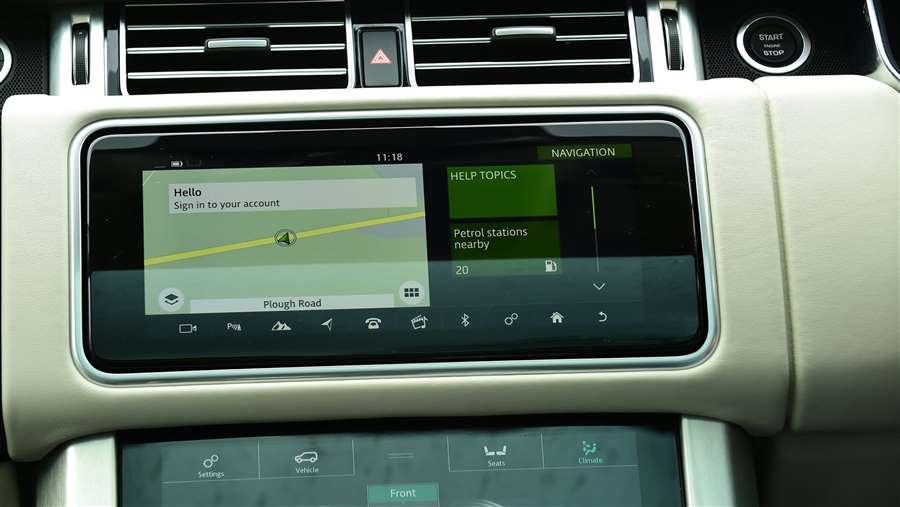
The ultimate high-performance Range Rover is the short-wheelbase SVAutobiography Dynamic, which can be identified by its unique finish to the side vents, bonnet and front grille, along with accents and badges on the bumper. Inside, passengers are treated to diamond-quilted leather with contrasting stitching and a special veneer finish to the dashboard.
Options
A key option is the Drive Pack, which includes a driver condition monitor to identify and warn of driver fatigue, blind-spot monitoring with reverse traffic detection and traffic-sign recognition incorporating a speed control system, which will automatically limit your speed according to the prevailing limit.
There's a huge amount of accessories on offer, but if you're a music fan there are a couple of special choices available, such as the 825-watt Meridian stereo with 19 speakers. True audiophiles can opt for a mind-blowing 1,700-watt, 29-speaker set-up.
Range Rover SUV - Practicality & boot space
There’s plenty of room in the Range Rover for a driver and four passengers, as well as loads of boot space
Anyone who's ever seen a Range Rover can tell you just how large it really is – at five metres long, there's not much on the road that’s bigger. That obviously means loads of space inside, but it's not much fun when it comes to negotiating narrow streets or squeezing into tight parking spaces. The long-wheelbase model is even bigger, so you’ll have to make sure you're not short on garage or driveway space.
Thanks to the Range Rover's considerable length, width and height, there's no shortage of space inside this large SUV. The big seats in the front are superb and there's enough room for the tallest or widest of occupants.
It's the same story in the back: few models provide this much space. But if that's still not enough, the long-wheelbase model increases rear legroom enormously.
Most models have space for five, but a four-seat option ditches the middle rear seat to create storage space and more room for the two remaining back-seat passengers. It feels wonderfully opulent, but choosing this option means you can't fold the rear seats down, although you can recline them.
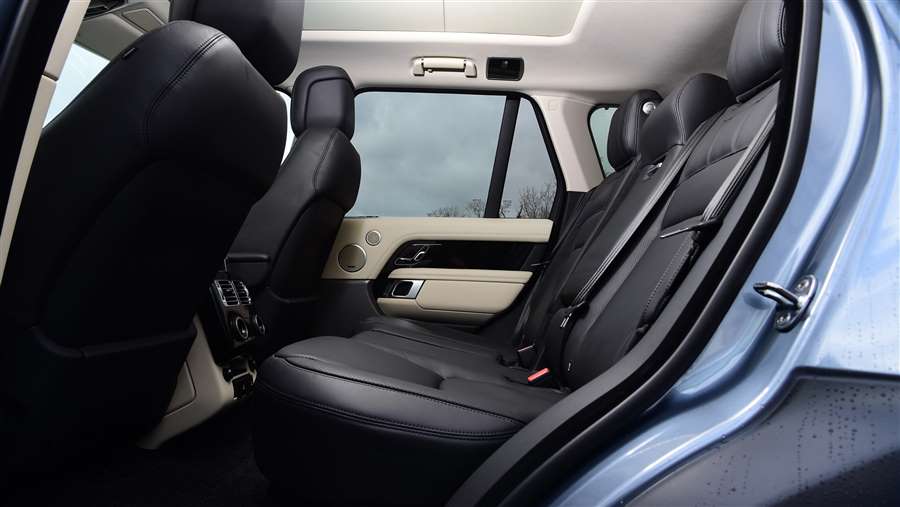
There's lots of storage space, too. The dashboard has two gloveboxes, there are big pockets in the doors and centre console and you can even specify a fridge between the front seats.
The bad news, though, is that the Range Rover feels huge. It can be difficult to get into it unless you use the 'access height' function, which temporarily drops the suspension by 50mm to let you climb in.
Once inside, you'll find the Range Rover's huge dimensions make driving it a bit tricky. It's a good job that you get large windows and big mirrors, and that you can see the bonnet edges from behind the wheel, because this all helps you to place the car on the road.
Land Rover offers plenty of gadgets to help make life easier for you, including a rear-view camera that comes as standard across the range. Then there's an automatic parking system to help with parallel and perpendicular parking, a system to alert you of traffic while you're reversing out of a space and a 360-degree camera, too.
If you want a bit more space in the rear, Land Rover also offers a long wheelbase version of the Range Rover for an extra £7,000.
First, the good news: the Range Rover has a massive 909-litre boot. If you need to put that into perspective, just consider that the practical Volkswagen Golf family hatchback has a 380-litre boot.
If you ever need more space than that, then you can just flip the rear seats forward to more than double the amount of storage up to 2,030 litres – as long as you haven’t gone for the two-rear-armchairs option.
All models get a powered split tailgate as well: you just press a button on the key to open the boot. The bottom half of the tailgate also folds out, giving you somewhere to sit while you take your muddy shoes off, or simply a way to slide big, heavy items into the boot. Recent revisions to the car included a hands-free boot opening feature.
Towing
It's a safe bet that a lot of Range Rover buyers will use their cars for towing – and it certainly boasts some impressive figures. The D300 diesel can tow an unbraked trailer, caravan or horsebox weighing up to 750kg and a maximum braked load of 3,500kg.
Those figures also apply to the D350 diesel, P400 and the V8 supercharged petrol models, while the P400e plug-in hybrid has a slightly reduced towing limit of 2,500kg. All Range Rovers have a maximum roof-rack load limit of 100kg, including the weight of the roof rails.
Range Rover SUV - Reliability & safety
Early cars had a few electrical gremlins, bu most of these seem to have been ironed out. The Range Rover also has excellent safety credentials.
Range Rover reliability
Land Rover has a reputation for making high-class, stylish 4x4s, but there's no denying its poor record for reliability over the years. The company has often finished towards the bottom of owner satisfaction surveys, with some big bills reported on older models.
The latest Range Rover is built in a different way and in a different factory to the previous car, while its electrical components are less complex and more reliable.
Too few Range Rover owners participated in our 2020 Driver Power satisfaction survey for it to be included. However, Land Rover finished 25th overall out of 30 brands covered in our 2020 survey, a disappointing fall from seventh place in 2018. The number of owners reporting a fault was 33.8%, the highest proportion of all the top 30 manufacturers.
Safety
The Range Rover has also been awarded a five-star Euro NCAP safety rating, which includes one of the highest ratings ever given for pedestrian protection in the large off-roader category.
Euro NCAP's tests praised the car for how it protects adult and child occupants. Its safety rating was boosted by a full suite of features, such as autonomous emergency braking and advanced traction-control systems that make the car safer and more stable on the road as well more capable off it. Should the worst happen, you and your passengers are protected by a full complement of airbags.
Source: carbuyer.co.uk
Volvo XC40 Review
The Volvo XC40 is quite a head-turner. Its tough, chunky SUV styling blends typically Scandinavian minimalism with eye-catching cues, such as an optional two-tone paint scheme where the roof contrasts with the rest of the body.
It also blends typical Volvo virtues like comfort and space with the high driving position and in-town manoeuvrability of a small SUV. Unlike small SUVs from other manufacturers, which have a tendency to be a little like scaled-down copies of larger models (the BMW X1 and X3 spring to mind here), the XC40 its own distinctive style.
In fact, it’s more youthful-looking than its more mature big brother, the XC60 – think of it as funky tee to the XC60’s tailored shirt.
The XC40’s interior still delivers on the minimalist cool you’ve come to expect from modern Volvos, but in this case, there’s a more contemporary tone. Examples of this include the door trims, armrest and handles, which are made out of a single piece of plastic and have colour-coded felt-lined inlays. This design not only adds a dash of vibrancy to the cabin but also frees up space for larger capacity door bins.
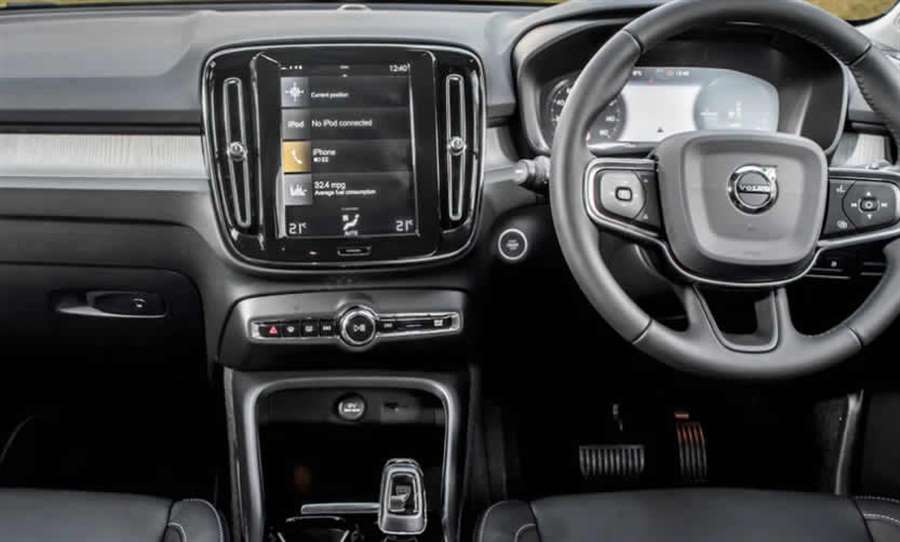
Cleverly thought-out storage solutions are a bit of a theme in the XC40 – the central armrest features a removable section that can work as a small waste paper bin, while the large, well-shaped boot offers a pop-up divider to help hold shopping bags in place. Both front-seat and rear-seat occupants will have plenty of space, too, and as a driver, you’ll find it easy to find an ideal driving position whether you’re small or tall.
There are some imperfections, though. Poke around a bit and you’ll notice some trim pieces feel of poorer quality than you might find in an Audi Q3. And, while the portrait-style infotainment system may look smart, being a touchscreen, it isn’t as easy to use when you’re driving as the rotary controller you get in a BMW X1.
Speaking of which the BMW is the slightly more fun car to drive. Yet that doesn’t mean the Volvo XC40 leans like a listing ship in the bends – it handles as well as you need an SUV to handle. And it gets the basics spot on. It’s comfy over bumps, effortless in town, and relaxing on the motorway.
Okay, so the engines and gearboxes in the XC40 aren’t quite as good as those in the comparative German models but this shouldn’t be a dealbreaker. The entry-level T3 petrol is punchy enough for town use and, if you do lots of miles, the economical D3 diesel is more than up to the job. You don’t really need to pay extra for the more powerful engines, although company car drivers should keep in mind the Recharge plug-in hybrid models because they’ll be the cheapest to own.
There are some upgrades worth considering though. The Volvo XC40 is one of the safest new cars on the road as standard, but it is available with extra kit such as blind-spot monitoring. You can also get an advanced cruise control system which will keep you a safe distance from the car in front, will steer to keep you in lane and even work in stop-start motorway traffic.
Of course, all this adds to the price, but the XC40 is still quite competitive for a posh small SUV – but check out our Volvo XC40 deals to see how much you can save on one. Or click the links below to get offers on our recommended XC40 model.
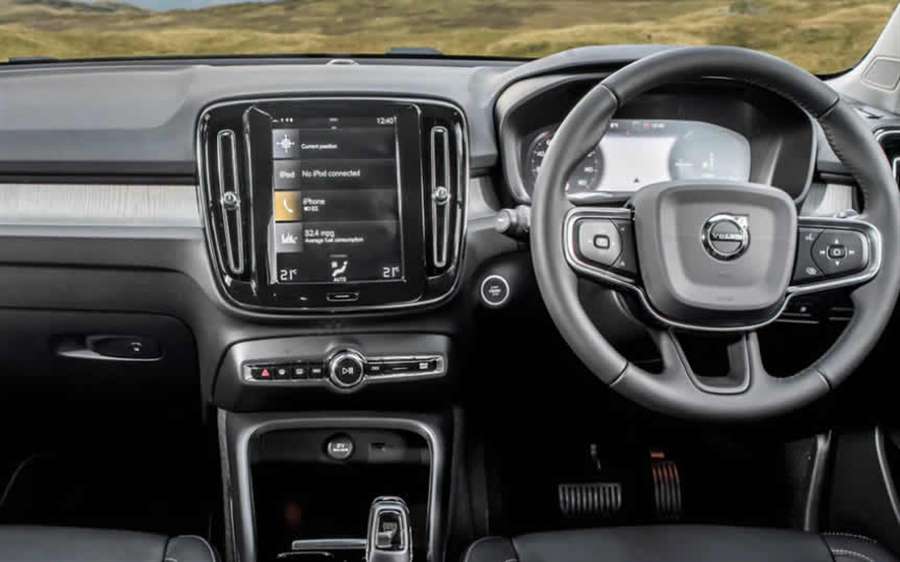
How practical is it?
The Volvo XC40’s interior has room for four adults and an impressive amount of storage space in the doors. The boot isn’t the largest, but it is well designed and packed with features
What's it like inside?
The Volvo XC40’s interior has a classy minimalist design and an eye-catching infotainment screen. Sadly, it’s not the easiest system to use and the XC40 also suffers from patchy build quality.
Volvo XC40 interior
The Volvo XC40’s interior has a classy minimalist design and an eye-catching infotainment screen. Sadly, it’s not the easiest system to use and the XC40 also suffers from patchy build quality.
Style
The Volvo XC40’s interior has a premium look and feel that marks it out from well-built but dowdy mainstream alternatives such as the Volkswagen Tiguan. In fact, it’s classy enough to be considered an alternative to posh SUVs such as the Mercedes GLA, Audi Q2 and BMW X1.
That said, none of them have the Volvo XC40’s portrait style, 9-inch infotainment screen. It means that conventional buttons are kept to a neat single row in the centre of the dash, including a large volume knob in the centre that is easy to reach for when you’re on the move.
The infotainment system’s design is exactly as you’ll find on larger Volvos, but the XC40’s youthful, bright Lava Orange carpet and door trims (available as an option on R-Design models) certainly aren’t.
That’ll help the XC40 appeal to you if you’re young. You’ll also like its soft-to-the-touch plastics and expensive-looking trims. The only problem is the construction, which has inconsistent gaps between panels that you wouldn’t find in an Audi Q2.
On the upside, even entry-level Volvo XC40 Momentum models get textile-vinyl (friends will assume they’re half-leather) seats and Urban Grid Aluminium trim pieces that look very nice.
Sportier-looking R-Design models get leather-nubuck upholstery, a leather-trimmed steering wheel and gear knob, as well as aluminium inlays.
Inscription models are the poshest, and come with a full leather interior and unvarnished wooden trim pieces that looks as good as anything Mercedes has to offer.
If you’ve ever used an Apple iPad then you’ll have no problem operating the Volvo XC40’s 9-inch infotainment display. It lets you swipe between menus and pinch to zoom in on maps, and has a conventional ‘home’ button at the bottom of the screen so you can skip quickly to the main menu.
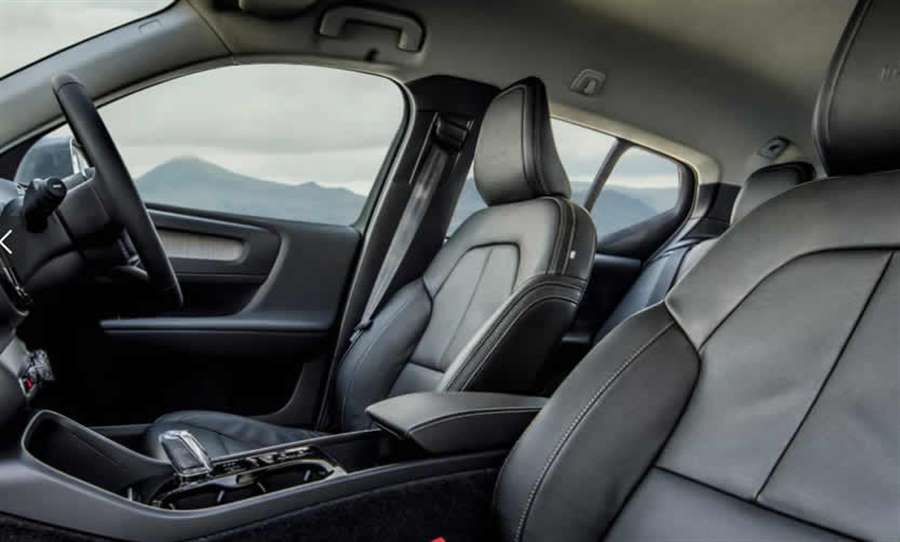
Entering a postcode is easily done while you’re parked – either by writing in the letters with your finger or by typing them in via the onscreen keyboard – but it’s fiddlier to do when you’re driving than it is in the BMW X1 or Audi Q2.
In fairness, the Volvo XC40 wins some points back by offering an app for your smartphone, so you can programme the sat-nav without even having to leave the house. You can also use it to preset the cabin temperature or open the car remotely.
On top of the central infotainment screen, you get another 12.3-inch digital driver’s display that’s an option on the BMW and Audi. It’s customisable, so you can flick between conventional dials or having a large map display for the sat-nav right in front of your eyes.
Completing the Volvo XC40’s audio-visual package is a standard stereo that has a very healthy 250W output and eight speakers. That should be enough for casual music fans, but if you’re a full-blown enthusiast you’ll want to tick the box for the 13-speaker, 650W Harman Kardon system that can envelop you in a wave of sound.
Source: carwow.co.uk
2021 Kia K5 Pros and Cons Review: Better Than Accord?
Previously known as the Optima, Kia's new family sedan tries to stand out in a competitive segment.
The 2021 Kia K5 is trying to impress. This midsize sedan replaces the Optima in North America and adopts sportier styling than that of its predecessor. The Optima wasn't really known for its dynamic experience—it was a nice sedan that didn't impress or disappoint. With the K5, however, Kia seeks to change that. An all-turbo powertrain lineup, available all-wheel drive, and a spacious cabin all help the K5 generate some buzz in the still-crowded midsize sedan segment.
Whether you like it or hate it, the K5 is easily spotted in a crowded parking lot. The front end gets a new iteration of Kia's "tiger nose" grille and adds fake air vents, plus those Z-shaped daytime running lights. The rear is more mature, as it adopts dual exhaust tips and taillights that connect via a thin LED strip. The flashier exterior made an impact on our judges—some welcomed the new styling direction, but testing director Kim Reynolds described it as "more alien than interesting."
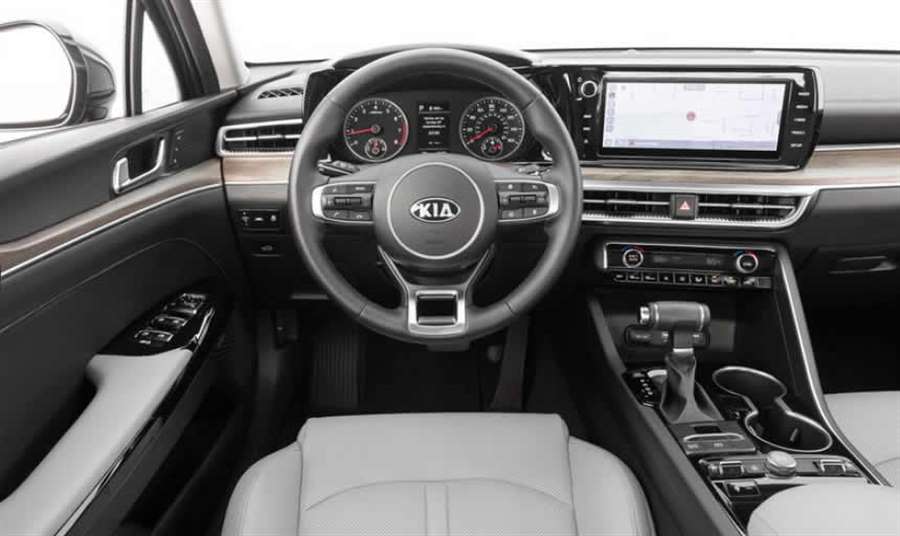
Sharing its platform and powertrains with the Hyundai Sonata, the K5 has a turbocharged 1.6-liter four-cylinder base engine with 180 hp and 195 lb-ft of torque. The optional turbo 2.5-liter is only available in the GT model, where it produces 290 hp and 311 lb-ft of twist. With its extra power, the K5 GT is much punchier than the Honda Accord 2.0T and delivers more torque than the Toyota Camry V-6.
Naturally, the 2.5-liter became the favorite among judges, as it made the K5 more fun to drive. The GT also handled well in our figure-eight test (though its sport suspension delivered a stiff ride on the street). We were especially thankful that Hyundai and Kia are still differentiating these platform-sharing cousins at a time when many automakers are dropping out of the sedan segment altogether.
With the Hyundai Sonata also participating in this year's competition, judges tried to find the differences between both (besides the sheet metal). "There was a spell when their products were very different from one another, but after getting out of the Sonata N-Line and into the K5 GT, the lines are increasingly blurred," features editor Christian Seabaugh said.
Although the Kia K5 and Hyundai Sonata drive similarly to each other, the differences were more notable inside. Our top-of-the-line K5 EX came with heated and ventilated front seats, a heated steering wheel, a 10.3-inch touchscreen with Apple CarPlay and Android Auto compatibility, and a panoramic sunroof. When compared to the Sonata SEL Plus, which is a trim below the fancy Sonata Limited, the K5 EX misses some important features, such as a digital instrument cluster and the ability to use your smartphone as a key. The "Smaht Pahk" feature that made the Sonata a star during the Super Bowl is also not available in the K5. But with a $32,355 price tag, this K5 EX offered a lot of bang for the buck.
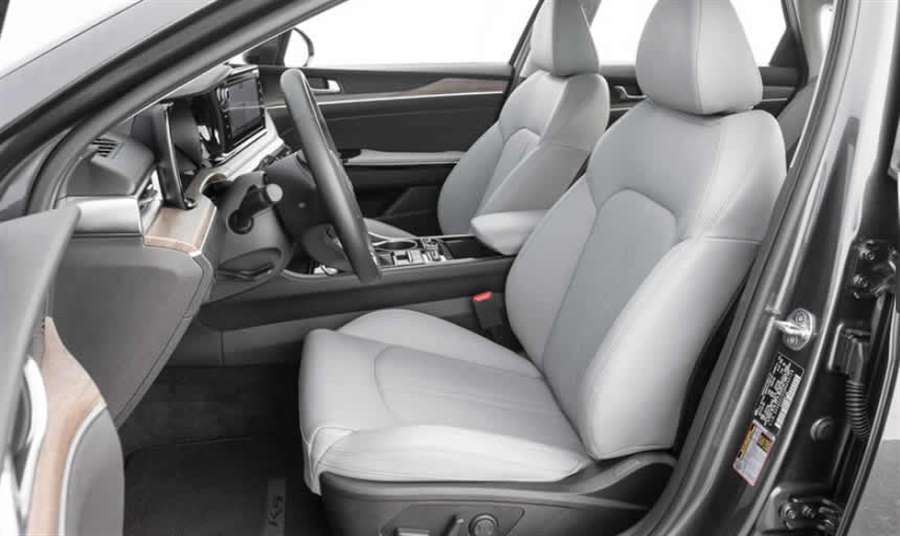
We had mixed opinions when it came to the interior styling. Some judges preferred the K5 and its traditional shifter, but others liked the Sonata's airy cabin, a result of its compact button shifter. "As much as I like the fake wood trim and the different dash, I don't think the K5's styling will age well," Motortrend Buyer's Guide director Zach Gale said. On the other hand, editor-in-chief Mark Rechtin preferred the K5's driver-oriented center console: "Everything is within easy reach."
Although the K5 brings significant changes to Kia's midsize sedan, it didn't have enough to move the needle for our editors. And even though it stands out among the competition in terms of design and optional powertrains, it continues to be overshadowed by the Accord (and perhaps even the Sonata).
Source: mototrend.com
Tested: 2021 Audi RS6 Avant Is About More Than Numbers
Audi's new RS6 Avant wagon is even more special than its 591-hp twin-turbo V-8 and 3.1-second 60-mph time implies.
Ever hear of left-digit bias? It's the reason ShamWows cost $19.95 instead of $20 and why people say they're 39 instead of 40. We focus on that first digit and assign it undeserved importance because our cave-dweller brains are easily tricked. This is why the 2021 Audi RS6 Avant's certifiably ballistic 60-mph time of 3.1 seconds seems, in a bizarre way, mundane. If that time were two-tenths of a second quicker, we'd be petitioning for National RS6 Day, a time to celebrate and reflect on the RS6's righteous and scarcely believable acceleration. Instead, we're like, "Yeah, about what we expected." Can you really even feel the difference between a 2.9-second and 3.1-second run? Sure, to the same extent you notice that five-cent difference in the pretax price of ShamWows and a $20 bill, which is to say barely at all. But thanks to left-digit bias, the RS6 Avant puts us in the unusual position of apologizing for numbers that should require no apologies.
HIGHS: Mind-melting, brain-rattling V-8; light-footed dynamics; fun for the whole family.
Those numbers include the output from the twin-turbo 4.0-liter V-8—591 horsepower and 590 pound-feet of torque—and the quarter-mile run of 11.5 seconds at 120 mph. These are impeccable performance bona fides, though maybe not what we consider supercar numbers these days. Then again, this is a station wagon. That's easy to forget when you're behind the wheel, looking out over those flared front fenders (2.5 inches wider than a standard A6's) and listening to the turbos and sport exhaust carry on a lively banter of chuffs and thunder. The cargo area is capacious and practical and hidden by a slick motorized cover, but you'll want to lash down those groceries because what's behind you tends to slip your mind when your skull is crushed into the headrest with the force of gravity (and then some). Activate launch control and you might see the gauge-cluster accelerometer spike at 1.19 g's, as we did. That'll scramble your eggs and your inner ear.
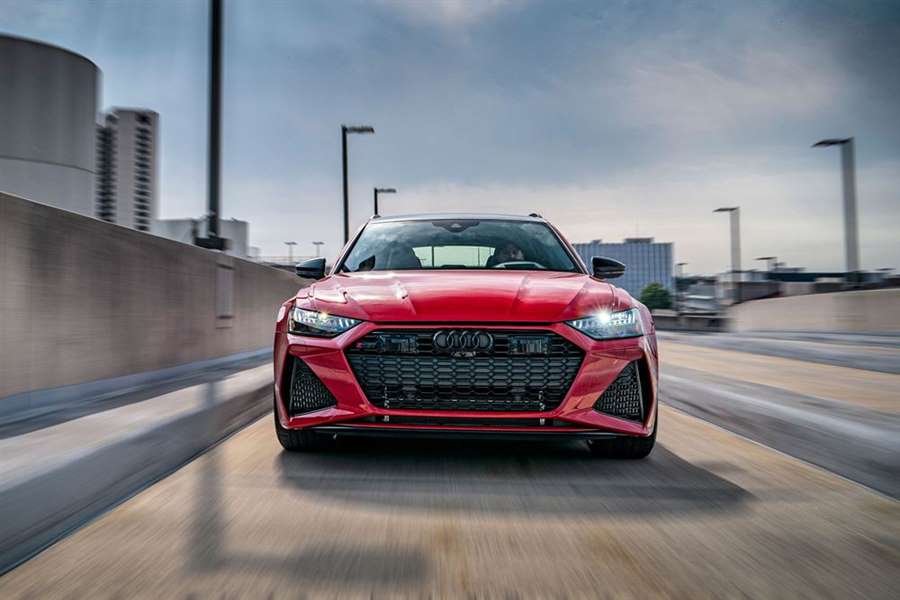
The Avant isn't just a drag-strip specialist, though. Like many of Audi's RS forebears, the RS6 is seemingly handicapped by a front-loaded weight bias, that V-8 overbite saddling the nose with 55.0 percent of the car's heft. But in practice, the RS6 feels perfectly balanced and even a little tail-happy thanks to the magic of torque vectoring and four-wheel steering. The rear sport differential can send almost all the torque to one side or the other, collaborating with the rear steering to endow the big Audi with instant turn-in. Add some throttle with your steering lock—which in a nose-heavy all-wheel-drive car would normally result in tragic understeer—and the rear end will start to swing wide while the front holds the line. The RS6 Avant is the unlikely 5031-pound car that can dance. Again, don't get too obsessed with the at-the-limit numbers (in this case, a middling 0.94 g on the skidpad). It feels plenty grippy when you're bombing down your favorite off-ramp.
LOWS: Thirstier than a salmon in the Sahara, exotic price.
So Audi nailed the essentials, and—here's the tricky part, sometimes—it did it with panache. Just look at this thing. Is this not the meanest wagon yet conceived by humankind? After an initial 10-minute drive, we had two text messages from neighbors who'd seen the car on the road. Sample: "Was that an RS6? Is Audi finally bringing that back to the U.S.? Woooowww." The basic shape and stance are so perfect that you recognize this car from 100 paces, but it's also interesting when you zoom in on the details. Check out the yellow decals inside the headlights, warning you not to stare because there are lasers in there. Or the Audi Sport puddle lights when you open the front doors at night. Or the optional blacked-out Audi logos on the grille and hatch. All of it works to reinforce the message that this isn't the Allroad. Maybe the AllRoadCourse.
The RS6 Avant can pretend it's reasonable family transportation if you relax the adaptive suspension and ignore the button on the steering wheel labeled "RS Mode." But that's a difficult button to ignore. The RS modes (two of them, in ascending order of depravity) are customizable, but both of them sharpen the Avant's responses and generally serve to amplify the fun, even jacking up the idle so the car feels like it's straining the leash when it's stopped. You can, of course, make the exhaust louder by selecting either of the RS modes, but in this car, the rumble out back is always rivaled by the soundtrack from the intake. Turbos normally whoosh. The RS6 Avant's sound like Lord Gorg just exited the airlock of his starship to announce an important revision to the food chain and your new position therein.
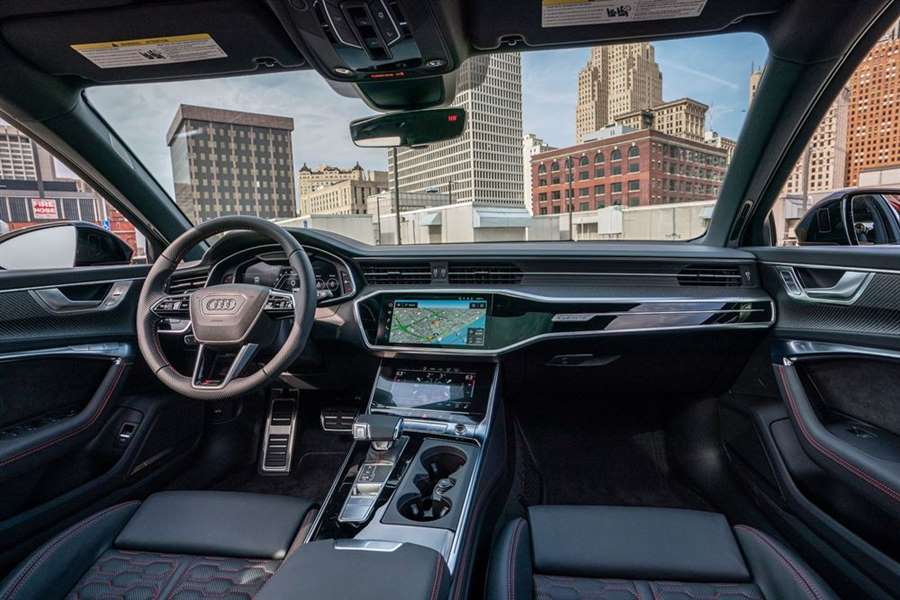
The RS6 drawbacks, such as they are, tend to fall into the category of self-owns. For instance, the RS6's sleek interior touchscreens on the center stack (a 10.1-inch upper display and an 8.6-inch lower one) look minimalist, which is appropriate since they're minimally functional. Why did Audi kill the scroll knob? If you want to change a radio station, you can use the touchscreen, steering wheel buttons, or volume knob toggle, all of which work equally badly. Try to jump more than two or three stations and the system has a CPU fart and freezes where it is. At first we just thought the car really loved Ozzy's Boneyard.
And there's a lot of hardware crammed into that nose. (That's not unprecedented: The 2003 RS6 engine bay was so cramped you had to drop the front anti-roll bar to do an oil change.) Cooling fans tend to run for a long time after you shut down the engine. The fuel economy stinks—17 mpg combined, per the EPA. And top speed is restricted to 156 mph instead of a claimed 190 unless you ante up for the carbon-ceramic brakes, which cost $8500. You're telling us that the standard 16.5-inch front and 14.6-inch rear rotors can't handle 190? That's so unfair we're going to our room and slamming the door.
But we won't stay mad, because the RS6 Avant validates enthusiasts with its very existence. In a world lousy with 600-hp SUVs, we don't have nearly enough 600-hp wagons. Note that we didn't say "affordable 600-hp wagons." Audi says it builds a two-digit number of RS6 Avants per day at its Neckarsulm plant in Germany, but it'd surely make more if it could find a bigger crowd of buyers willing and able to trade tall stacks of hundred-dollar bills for a rally family sport wagon.
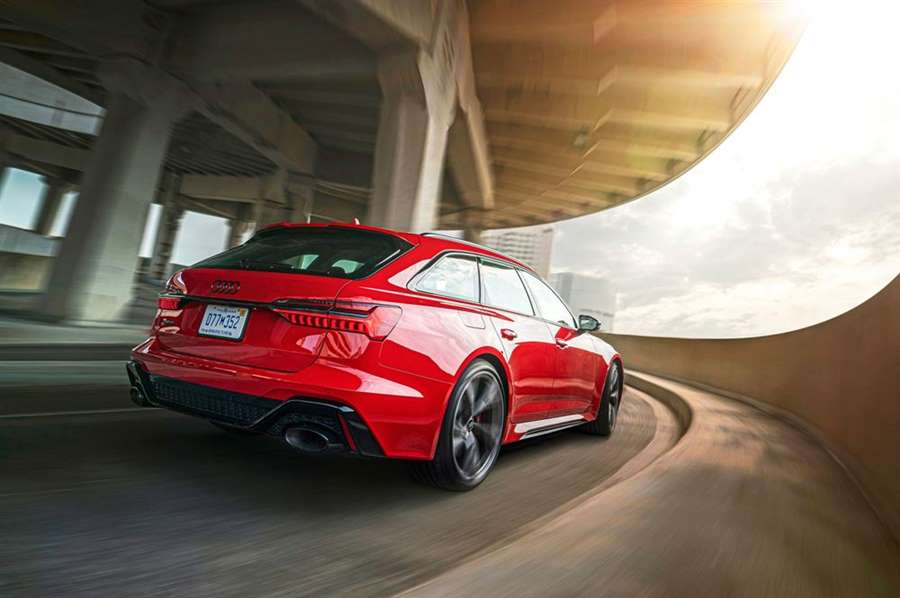
Greatness doesn't come cheap. And left-digit bias, pervasive as it is, has its limits, as exemplified by the RS6's $110,045 base price. It's not like $110,050 is some talismanic psychological threshold for financial responsibility. And in any case, adding a few options quickly bumped our as-tested price to $119,840. But that price looks pretty good when you compare the RS6 with its corporate cousin, the Porsche Panamera Turbo Sport Turismo, which is similarly rapid but costs $158,350 before you so much as color in those crests.
Normally when we argue that there's more to a car than its numbers, we're talking about something like a Mazda Miata, which doesn't look quick on paper but is a joy to drive. The RS6 Avant actually does put up some monster numbers. But the experience is even better.
Source: carandriver.com
Mercedes-AMG C 63 S Charon Has More Than Meets The Eye
Poland-based Auto Dynamics just unloaded its new tuning package for the Mercedes-AMG C 63 S codenamed as “Charon”. On the outside, the Merc appears almost the same as its standard version but as the saying goes, “beauty is only skin-deep”, there’s more to the car than what the eye can see.
Beneath the hood of the base AMG C 63 S lies a 4.0-liter twin-turbo V8 engine with 503 hp and 516 lb-ft of torque. However, thanks to the AD850+ performance package of the tuner, additional 340 hp and 200 lb-ft can be squeezed out from the car, which brings its total output to a whopping 843 hp and 716 lb-ft of torque.
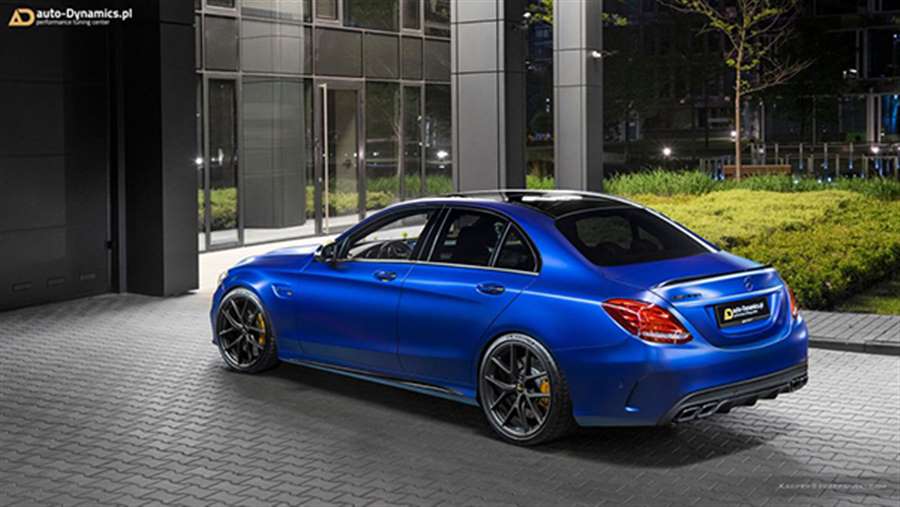
The package includes an ECU tuning as well as a new set of TTE turbochargers, a sports catalyst, Supersprint downpipes, and cat-back exhaust system with adjustable valves from Remus Innovation. The power modifications are also complemented by Eventuri carbon-fiber intake with upgraded air intakes for better air circulation, Weistec ASV/BOV blow-off adapter, Wagner Tuning carbon air injectors, and Weistec sump for the AMG Speedshift transmission.
Meanwhile, the exterior of the Mercedes-AMG C 63 S gets a mild makeover with the AD Black Star body kit of Auto Dynamics. The package includes a blacked-out Panamericana grille, door handles, and the tuner’s badges. Lastly, it is topped off with a set of 20-inch BBS wheels wrapped in Michelin Pilot 4S tires complete with lowering springs by Eibach and Fischer Stahlflex brake lines.
Source: mercedes-world.com

